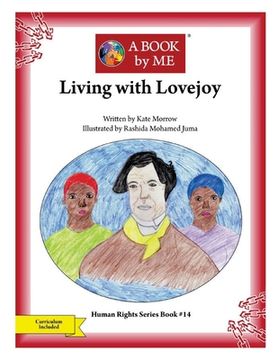Reseña del libro "Living with Lovejoy (en Inglés)"
The Underground Railroad was maintained in the northern states to aid runaway slaves in their attempt to reach freedom in Canada. It wasn't a real railroad and it was not under the ground. It was called "underground" because it was a secret and "railroad" because it seemed to run regularly like a train route. Princeton was possibly the most important "station" in Illinois because of Reverend Owen Lovejoy. He was born in Maine and moved to Alton, Illinois as a young man. Owen studied for the ministry while living with his older brother, Elijah, who was the editor of an abolitionist newspaper. After Elijah was murdered by pro-slavery forces, Owen vowed to carry on his work to end slavery. Lovejoy accepted a position in Princeton as minister of the Hampshire Colony Congregational Church and moved there in 1838. He rented a room from Butler and Eunice Denham and, when he died in 1841, Lovejoy married his widow two years later. The couple had six children of their own in addition to the three daughters from Mrs. Lovejoy's first marriage. The farm became known as the Lovejoy Homestead. It is believed that Butler and Eunice hid fugitive slaves in their home before Owen Lovejoy lived there, but certainly, after Lovejoy became head of the household, the Underground Railroad was very active. In 1843 he was indicted by the grand jury for harboring two slave women; but was acquitted at his trial. He used the pulpit to speak out against slavery and, also, he entered national politics as a way to continue his crusade against slavery. He was elected to Congress in 1856 and served there until his death in 1864. Lovejoy was a platform speaker in support of Abraham Lincoln in his famous debates with Stephen Douglas. While in Congress, he introduced the final bill to end slavery in the District of Columbia. This was a goal of the American Anti-Slavery Society. He also helped gain passage of legislation prohibiting slavery in the territories. He was one of the few steadfast Congressional supporters of Lincoln during the American Civil War. Lincoln wrote, "To the day of his death, it would scarcely wrong any other to say, he was my most generous friend." Princeton was on the Quincy route of the Underground Railroad in Illinois. Runaway slaves came up the Mississippi River and stopped at many stations between Quincy and Galesburg before reaching Princeton. Each stop was usually about ten miles apart. From Princeton, the slaves would have traveled on to one of several towns that harbored fugitives. The choice often depended on which town was the safest at that particular time. At other times, Underground Railroad operators would transport a runaway slave to a nearby village. The trip to Canada could possibly take a year. The best time to run was during holidays or on a weekend. In that way time often went by before someone noticed the slave was gone. The hardest part of running away was knowing one may never see family or friends again. The slaves learned basic methods to keep running the right direction. Transportation was sometimes by wagon with the slave hidden under a load of hay or straw, but many walked during the night when the North Star could guide them to safety. During the day, remembering that moss grows on the north side of trees was valuable. Wading in streams confused dogs that were tracking runaway slaves. The travelers had much to remember, and fear was their constant companion. Members of The Underground Railroad often used specific terms, based on the metaphor of the railway. For example: - People who helped slaves find the railroad were "agents" (or "shepherds"). - Guides were known as "conductors." - Free or escaped blacks (sometimes whites) who helped guide fugitives were "abductors." - Hiding places were "stations." - "Station masters" hid slaves in their homes. - Escaped slaves were referred to as "passengers" or "cargo." - Slaves would obtain a "ticket." - Financial benefactors of the Railroad were known a

